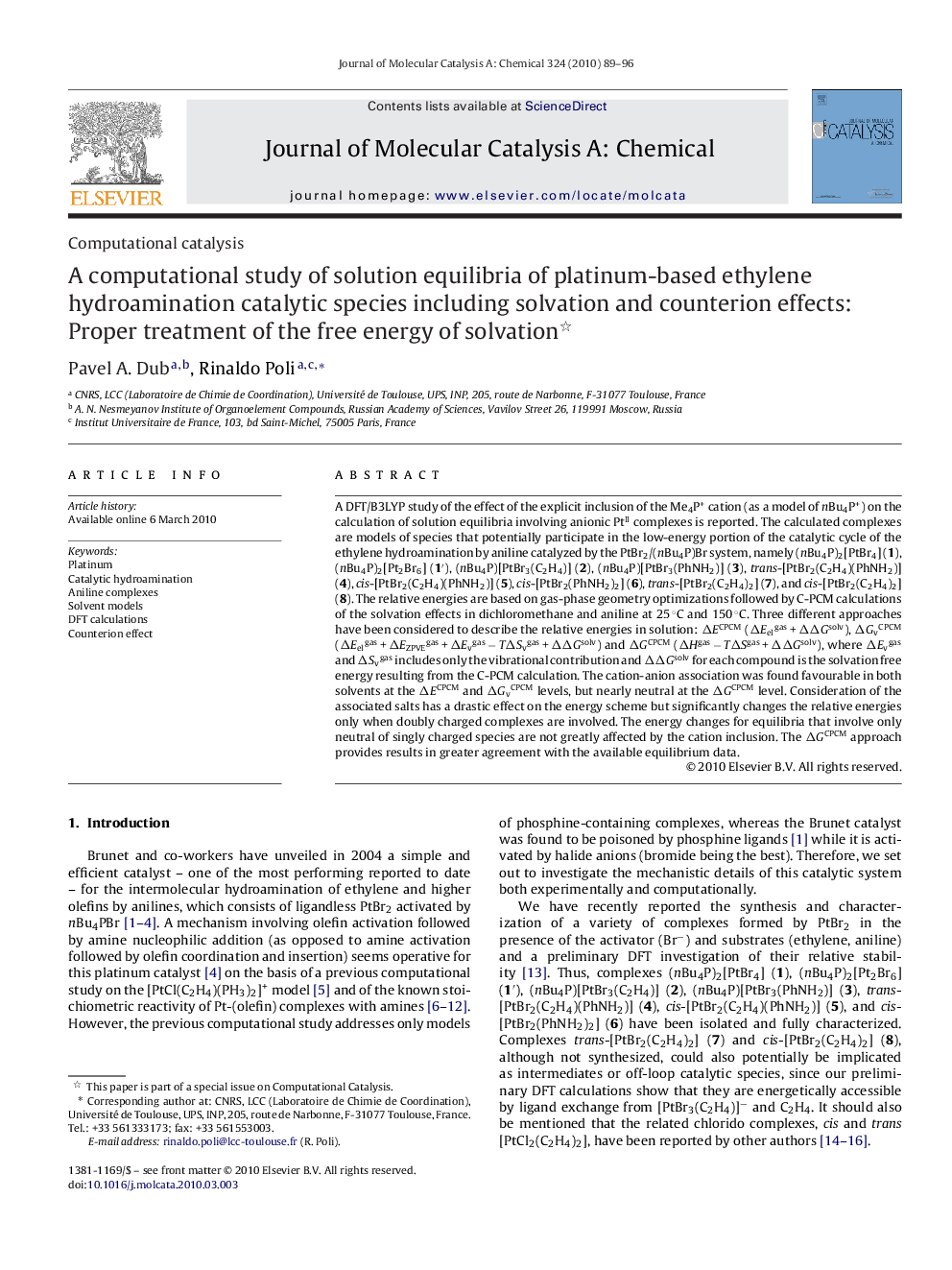| Article ID | Journal | Published Year | Pages | File Type |
|---|---|---|---|---|
| 66770 | Journal of Molecular Catalysis A: Chemical | 2010 | 8 Pages |
A DFT/B3LYP study of the effect of the explicit inclusion of the Me4P+ cation (as a model of nBu4P+) on the calculation of solution equilibria involving anionic PtII complexes is reported. The calculated complexes are models of species that potentially participate in the low-energy portion of the catalytic cycle of the ethylene hydroamination by aniline catalyzed by the PtBr2/(nBu4P)Br system, namely (nBu4P)2[PtBr4] (1), (nBu4P)2[Pt2Br6] (1′), (nBu4P)[PtBr3(C2H4)] (2), (nBu4P)[PtBr3(PhNH2)] (3), trans-[PtBr2(C2H4)(PhNH2)] (4), cis-[PtBr2(C2H4)(PhNH2)] (5), cis-[PtBr2(PhNH2)2] (6), trans-[PtBr2(C2H4)2] (7), and cis-[PtBr2(C2H4)2] (8). The relative energies are based on gas-phase geometry optimizations followed by C-PCM calculations of the solvation effects in dichloromethane and aniline at 25 °C and 150 °C. Three different approaches have been considered to describe the relative energies in solution: ΔECPCM (ΔEelgas + ΔΔGsolv), ΔGvCPCM (ΔEelgas + ΔEZPVEgas + ΔEvgas − TΔSvgas + ΔΔGsolv) and ΔGCPCM (ΔHgas − TΔSgas + ΔΔGsolv), where ΔEvgas and ΔSvgas includes only the vibrational contribution and ΔΔGsolv for each compound is the solvation free energy resulting from the C-PCM calculation. The cation-anion association was found favourable in both solvents at the ΔECPCM and ΔGvCPCM levels, but nearly neutral at the ΔGCPCM level. Consideration of the associated salts has a drastic effect on the energy scheme but significantly changes the relative energies only when doubly charged complexes are involved. The energy changes for equilibria that involve only neutral of singly charged species are not greatly affected by the cation inclusion. The ΔGCPCM approach provides results in greater agreement with the available equilibrium data.
Graphical abstract.Figure optionsDownload full-size imageDownload high-quality image (199 K)Download as PowerPoint slide
